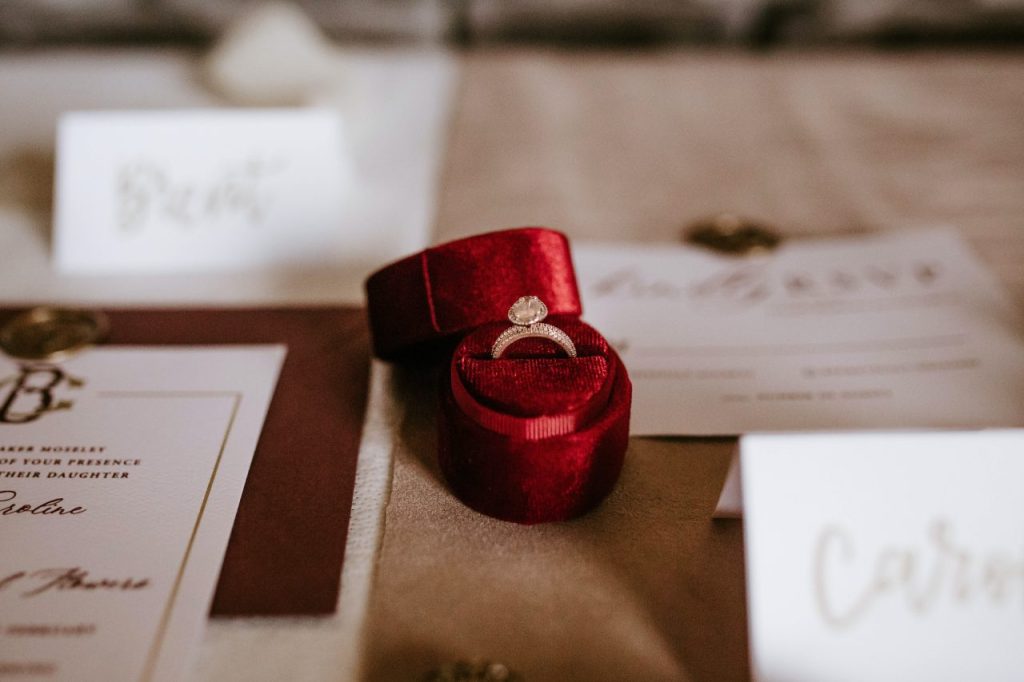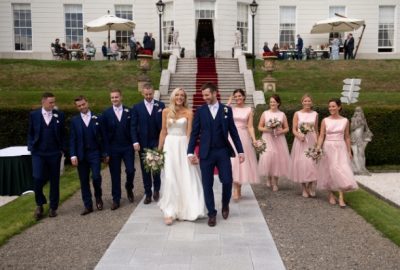Have you got a list of wedding ceremony questions? If this is your first wedding, I bet you have! Well I spoke with our fabulous wedding celebrants and solemnisers to get the inside scoop. Take a look at your frequently asked questions, along with their expert tips and detailed answers below.
Can we keep it simple?
Do we have to write our own vows?
According to Ruth Healy… absolutely not! Writing your own vows is a personal choice and there is no hard and fast rule that says you have to do it!
“It’s perfectly acceptable to use traditional wedding vows if you feel more comfortable with that option. It is true to say that writing your own vows can be a beautiful way to express your love and commitment to your partner in a unique and personal manner, however it will not detract from your ceremony in the slightest if you choose from
traditional vows which can be personalised and delivered by your celebrant.”
Ruth says that many couples feel shy or nervous about writing their own vows. If this is you, here are some suggestions from Ruth:
- Discuss it with your partner: Talk openly with your partner about your concerns and feelings of shyness. They may have similar feelings or be willing to help you through the process.
- Take it step by step: Start by jotting down a few thoughts or phrases that come to mind when you think about your partner and your relationship. Focus on the qualities you love about them or memorable moments you’ve shared. Gradually expand on these ideas until you have a complete set of vows.
- Seek inspiration: Read examples of wedding vows online or in books to get inspiration. Your celebrant can provide various templates and prompts to help you structure your vows and find the right words.
- Practice and rehearse: Once you have written your vows, practice reading them aloud. This will help you become more familiar and comfortable with the words. You can also rehearse in front of a mirror or with a close friend or family member for added support.
- Keep it simple: Remember that your vows don’t have to be long or overly elaborate. The most important thing is that they come from the heart and reflect your genuine feelings. Focus on sincerity rather than worrying about being too extravagant or eloquent.
- Consider alternatives: If you’re still uncomfortable with writing your own vows, there are other ways to personalise your wedding ceremony.
How can I personalise my wedding ceremony?
According to Edel O’Connell, you get to choose the details! “From your choice of readings, to your personal vows, ring exchange wording and when it comes to Enhancements or mini ceremonies such as Handfasting, Unity Candles, Quaich Ceremony to name just a few, then the sky’s the limit.”
“Another way to personalise your ceremony is the “Couples Story”. As part of the samples I send to each couple, are your questionnaires. These give me an insight into you how you met, your journey’s ups and downs, funny incidents,
what you love about each other and even how he or she sometimes drives you mad. Based on your answers, your story becomes a very personal and fun part of the ceremony as a whole. It gives your guests a snap shot of who you are, why you want to spend the rest of your lives together and of course what marriage means for you. It’s a chance to have great fun and the result is always laughter and love. Word of warning I always say to couples is, be careful what
you write…make sure you don’t write anything you wouldn’t want me to say on the day! We don’t want any blushes or rows going down the aisle!”
How can we include our children in the ceremony?
- Have them come in before the bride throwing down petals in the path, from a basket.
- Have one of them bring up the rings as part of the bridal procession then come forward with the rings jusy before the exchange and hiold them out while I bless them.
- Do a reading – I have lots of readings suitable for children including a lovely Winnie the Pooh one
- Involve them in the handfasting by reading out one of the qualities of the marriage when I tie the knot after wrapping (3 times)
- Take part in the Sand Ceremony – the bride and groom and each of the children have some coloured sand in small glass containers. The bride and groom put half of their sand into a larger container showing that they are the rock of the family. Theh each child puts their coloured sand into the larger container and finally the bride and groom empty the rest of their sand on top demonstrating that they surround their children with unconditional love. The different coloured sands shows the uniqueness and diversity of each individual yet together it makes a harmonious, colourful unit.
- Have the children stand next to you when you make your vows
- Handfasting: Another way to include children in the ceremony is for them to present the ribbons for the handfasting. The handfasting ceremony can be tailored to include the children. For example, Dhá Chroi (two hearts) can be Trí Chroi (three hearts) or Ceithre Chroi (four hearts).
- A puzzle: You could include children by creating a puzzle bearing all of the families names. This is a lovely way for children from previous unions to become part of this new union.
- Fingerprint tree: Another idea that I have used is during the ceremony creating a fingerprint tree with paints on a pre-drawn tree. The symbolism demonstrates the commitment of the family towards the new blended family.
How can we include guests in our wedding ceremony?
I would really like to have my Mother involved in the wedding ceremony but she is too shy to do a reading. How can I get her involved, without her having to speak in front of the guests?
Gail Quinn says that this is very common! Lots of people are terrified of speaking in front of others, but she also has some fabulous ideas for ways you can involve people without them having to speak:
“One of my favourites is to involve a guest in the ring warming ceremony. Your Mum could hold the rings and then, when I announce commencement of ring warming, I can say that she will make the first wish for you two as a couple and then start the rings on their journey around the guests. So all she has to do is hold the rings, make a wish for you and pass them to the person beside her. Simple! But very meaningful also.
If she is a little more brave, she might like to come up to light one or the two initial candles to represent you two as individuals and also your two families. This is a lovely symbolic ritual but, once again, she won’t have to speak, so not too much pressure. It also has the advantage of happening early in the ceremony so she gets it over with at the beginning and can then relax and enjoy the rest of the ceremony.”
Do we need to do a rehearsal?
How to actually enjoy the wedding ceremony?
“As you practice to relax every day starting today, you are expanding your capacity to handle stressful situation such as your wedding ceremony. The practice will look different to each of us. Some ideas are walking, running, yoga, meditation, breathing exercise, swimming, signing, gardening, reading a book. Not all of them together! Just pick one! Start today! Working with a professional wedding celebrant who will take care of all the details for your wedding ceremony will also help reduce the stress.”
How many songs can we have / do we need for our ceremony?
Gareth Matthews advises couples to have between four to six pieces of music for the ceremony:
- One for your entrance
- One after remembering your departed or between poems or readings (if desired)
- Two for signing the register (this allows times for photos)
- One for walking back down the aisle
- Maybe another for your guests leaving
How soon should we make contact with the HSE to start the legal process for our marriage?
I can’t seem to get an appointment with the Registration Office by book online? It’s says there are no vacancies?
How do I ensure that the legalities are carried out correctly on the Day?
7. Post the forms back to the HSE within 4 weeks with a postal order for €21.50 for the license.
What box do we tick on the Notification form?
CIVIL – these are the HSE Registrars only. Yes, if you’re having a CIVIL CEREMONY – that means that you are having an HSE Registrar conduct your ceremony for you. The ceremony can either take place in the Registry office itself – or you can request if a Registrar is available to go to your specific wedding venue**.
Civil ceremonies take place Monday – Friday only. The ceremony itself cannot include any religious, spiritual/faith-based wording, rituals, songs (instrumental or lyrical), or items (candles with crosses etc..) Fridays are the busiest days, for obvious reasons – so checking for availability as early as possible is highly recommended.
The HSE Registrar will be assigned to you 3-4 weeks out from your wedding date.
SECULAR – there are two Secular bodies on the HSE list of Solemnisers – Dara Molloy (based on the Aran Islands) and the Humanist Association of Ireland.
Secular ceremonies can take place on any day – pending availability of the Solemniser, in a venue of your choosing**
Inclusions in the ceremony will be depending on organisation chosen.
RELIGIOUS – these are ALL other Solemnisers in the Republic. They include Multi-faith, Catholic, Muslim, Hindi, Unitarian, Spiritual, Pagan etc.
Religious ceremonies can usually take place on any day of the week.
These are the most common types of ceremonies in the country – as they cover so many varied faiths & beliefs. You can have your ceremony with little/no religious wording/content in your own venue** or one full of spirituality in a church/temple etc.. For Religious & Secular marriage ceremonies – you must find & book your own Solemniser prior to your Notification of Intent to Marry appointment with the HSE.
**Venues must be ‘open to the public’ for a legal marriage ceremony (ie; not private property/homes)








